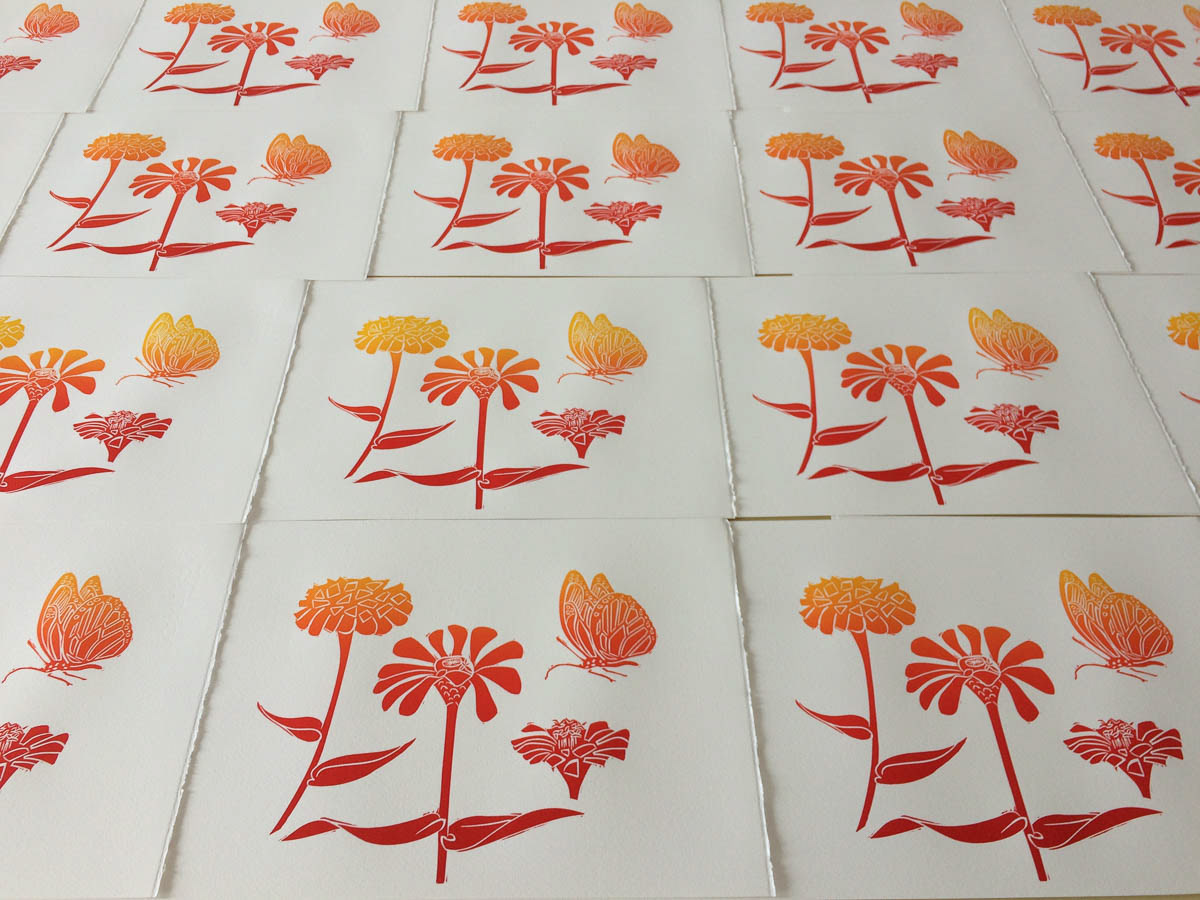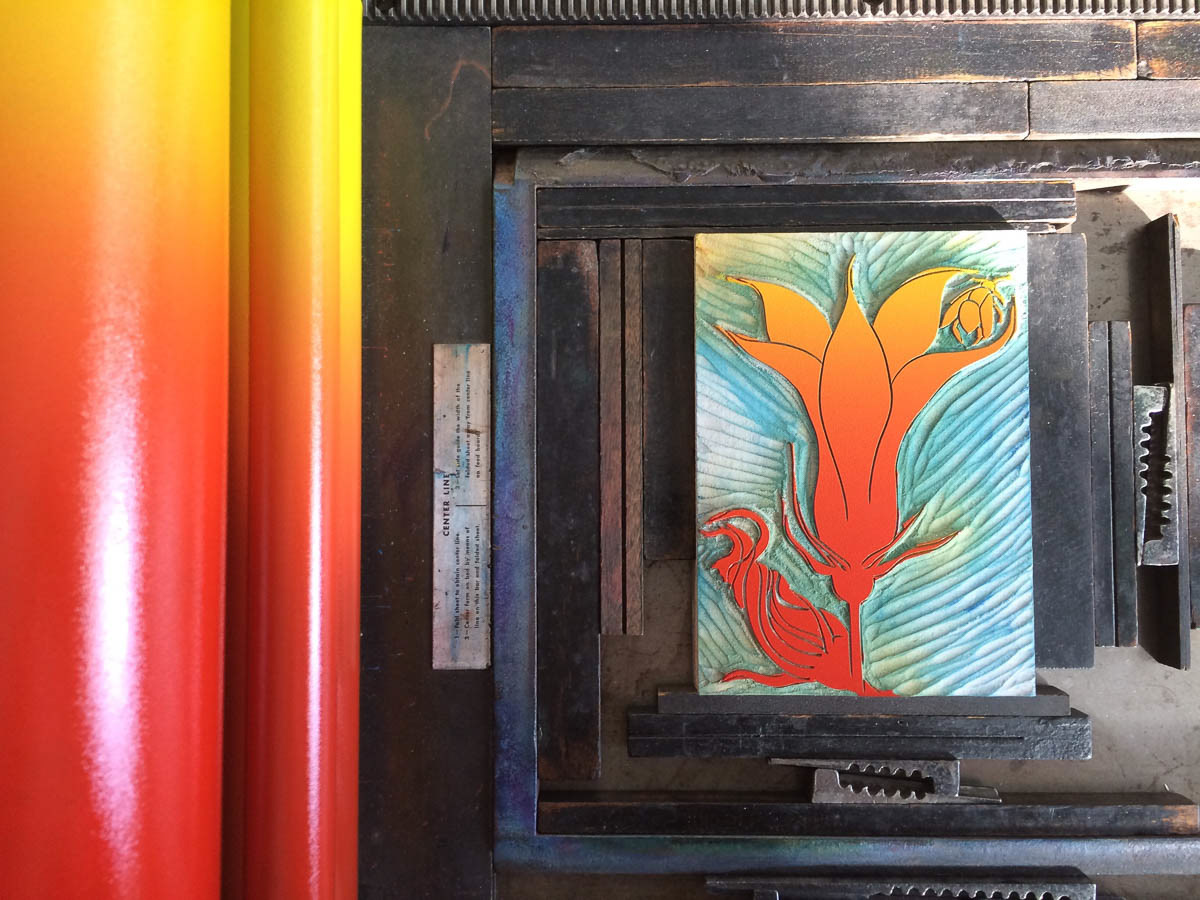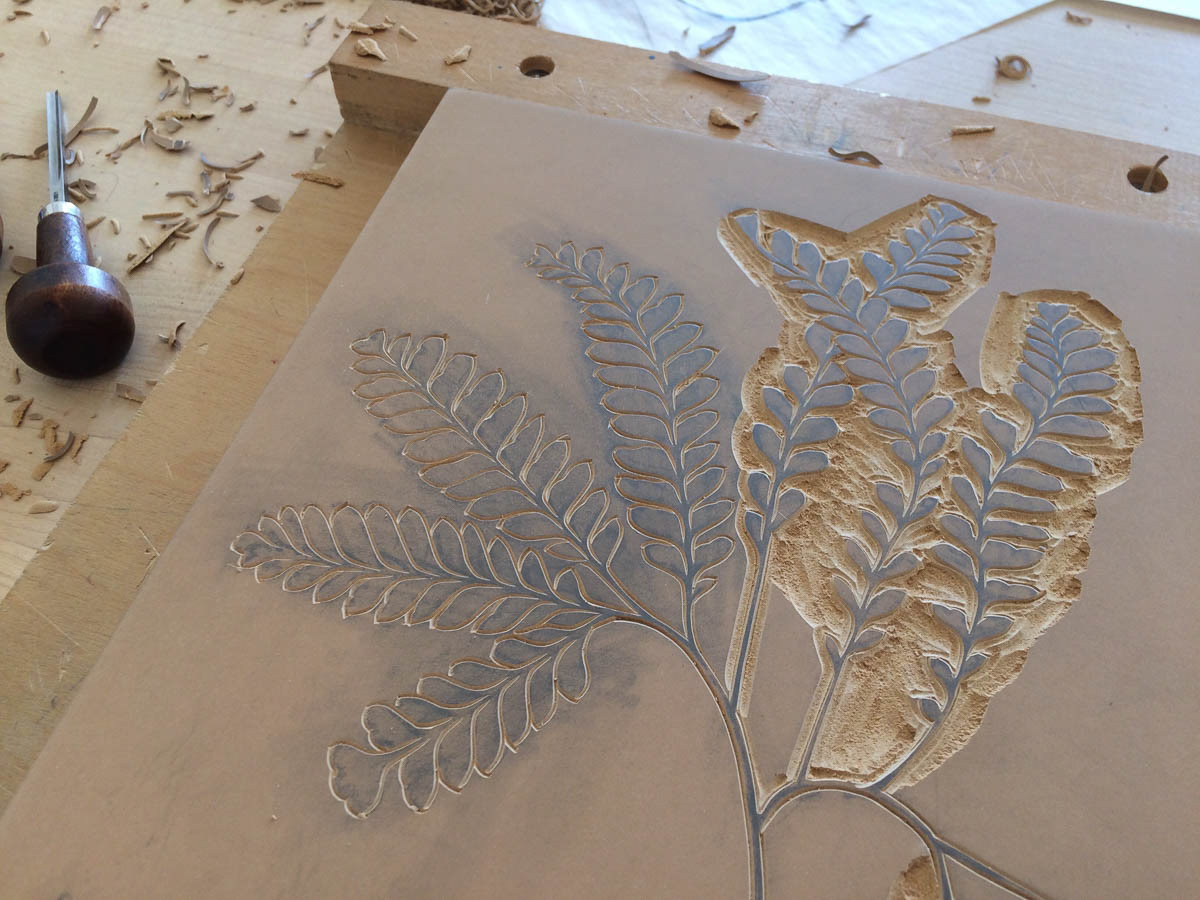To The Garden
2019
Edition of 15
9” x 9.75” x 1”
$1,200
A short history of one city block in Philadelphia, which began as a garden in 1820, then became a cemetery in 1830, then a factory, and finally, in 1995, a community garden. The text is written by the artist and illustrated with linoleum prints of plants from the garden. The text is hand-set in Cheltenham 18pt. and is printed on Somerset paper. The cover is Twinrocker handmade paper. Housed in archival box.











Once a garden in the city,
180 sorts of tulips,
Became a burial ground,
13,000 bodies sown.
Then a factory took over,
Until,
FIRE!
Neighbors joined together
And built a garden there,
Slowly evolving,
Now forever green.
180 sorts of tulips,
Became a burial ground,
13,000 bodies sown.
Then a factory took over,
Until,
FIRE!
Neighbors joined together
And built a garden there,
Slowly evolving,
Now forever green.
The history of the garden:
The history of the garden:
I was part of the neighborhood group that started the Bel Arbor Community Garden, on Kimball street, near 10th Street and Washington Avenue, in 1995. The land that the garden occupied has a rich past, and I researched the history through maps and historical information in the archives of the Pennsylvania Horticultural Society and at the Library Company of Philadelphia, where I worked as a rare book conservator at the time.
Some of the earliest records of this part of Philadelphia in 1820 show the tract of land adjacent to our garden’s location as the botanical garden of Mr. Alexander Parker, a founding member of the Horticultural Society. Parker offered many varieties of plants for sale, lists of which can be found in the archives of the PHS.
In 1830, the land became the Machpelah Cemetery, with over 13,000 interments by the late 1800s, described in a Philadelphia Inquirer article as “packed like sardines.” The City deemed the cemetery a health risk in the 1890s and shut it down, and promised the local citizens a park in its place. The bodies were moved by night — loaded into boxcars on the adjacent rail line running down Washington Avenue and transported to Mt. Moriah cemetery in West Philadelphia. Interestingly, the grave of Mr. Parker was one of the many moved.
Around 1900, instead of a park, a huge factory was built on the site, producing, among other things, cigars and textiles. The building stretched along the whole block of Washington Avenue between 10th and 11th streets and rose more than 100 feet high. The factory building was mostly empty by the 1990s and was sold to a developer. Shortly after the sale in 1993, a fire broke out in the structure and gutted part of the building. The hulking ruin was torn down the following year, leaving a vacant lot filled with trash and debris. At that point we joined with our neighbors to start a tree farm with the help of the PHS. The purpose of the tree farm was to plant saplings to raise for street planting around the neighborhood. Over 1,000 trees were nurtured and transplanted throughout the neighborhood through 2003.
The Bel Arbor Community Garden was established in 1995 on a small parcel of land owned by the neighboring church, adjacent to the tree farm lot. The landowner started developing three parcels of land that made up the tree farm in stages, and the tree farm eventually occupied only the last remaining undeveloped parcel, which was slated to become a parking lot and five residential units. The Bel Arbor group, with help from PHS, the Neighborhood Gardens Trust, and our City Council representative, managed to convince the property owner to donate the final parcel in 1999 to NGT, on behalf of Bel Arbor, to be preserved as open space for gardening.